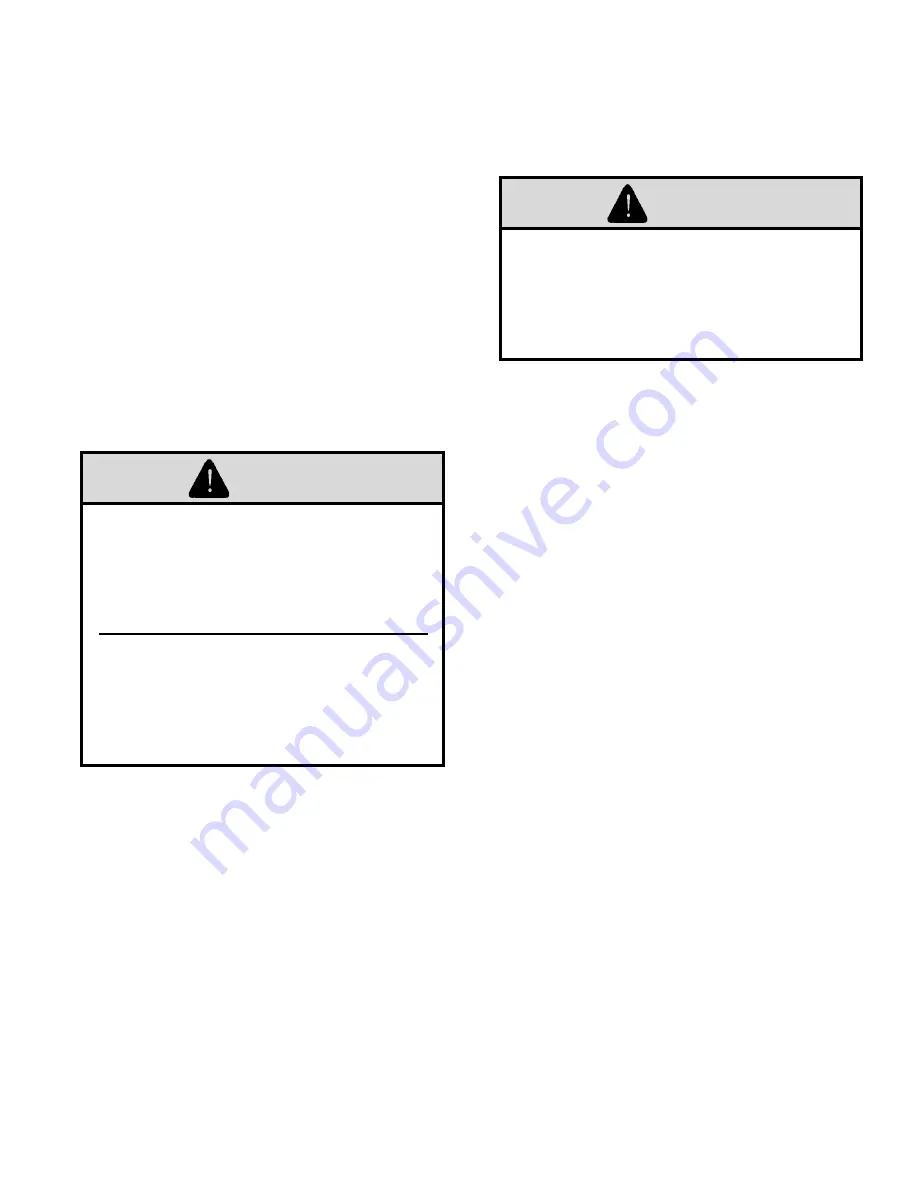
3
B. Maintenance
1. On a continuous basis:
• Keep the area around the boiler free from
combustible materials, gasoline, and other
flammable vapors and liquids.
• Keep the area around the combustion air inlet
terminal and the area around the boiler free
from contaminants, including all sources of
hydrocarbons such as bleaches, fabric softeners,
chemicals, sprays, cleaners, paints, paint
removers, refrigerants, and cat boxes. Traces
of these chemicals can be drawn into the boiler,
causing severe corrosion damage to the boiler
and/or objectionable odors.
A. General
1. This manual covers
the proper care and use of
the Alpine™ Condensing High Efficiency Gas Fired
Boiler.
2. Instructions to safely operate
and shut down
this boiler are shown in Figure 2 on page 5, as well
as on a label affixed to the boiler. Control locations
shown in Figure 1.
3. Flame Failure:
The boiler control will shut
off gas to the burner in the event of flame failure.
If boiler fails to fire, call a qualified gas service
technician to diagnose and correct the problem.
4. Combustion Air/Vent System Blockage:
The
boiler control will shut down the burner if there is
a blockage in the combustion air or vent pipe such
as a bee’s nest or ice. If boiler fails to fire, call a
qualified gas service technician to diagnose and
correct the problem. After removing a blockage, it
may be necessary to press the control reset button to
restart the boiler.
WARNING
Asphyxiation Hazard. In the event that the
ignition system on an Alpine boiler does
not permit the boiler to fire, there is either a
problem with the ignition system or a problem
with the vent system. Call a qualified gas
service technician to diagnose and correct
the problem.
A shutdown of the burner due to the pressure
switch is an indication that there is a problem
with the vent system, such as a blockage. The
boiler pressure switch should only be reset
after a qualified gas service technician has
diagnosed and corrected the venting problem
that caused the pressure switch to open.
• Keep the boiler room ventilation openings open
and unobstructed.
• Do not expose the boiler to large amounts of dust
such as that generated by drywall construction or
woodworking.
2. On a monthly basis:
WARNING
If any of the below listed conditions is found,
follow instructions “TO TURN OFF GAS TO
APPLIANCE” in Figure 2 and contact a qualified
gas service technician to correct the problem
before placing the boiler back in service. Failure
to correct these conditions could result in
property damage, personal injury or loss of life.
• Inspect vent and combustion air intake terminals
for obstruction or damage due to impact or
excessive temperature.
• Inspect vent and combustion air exterior wall
penetrations to be sure they are weather tight.
• Inspect the vent and combustion air intake
system for obstructions, loose joints, condensate
leakage, sags in horizontal runs of pipe,
corrosion, or other deterioration.
• Inspect water and gas lines for leaks.
• Remove boiler front door and inspect for carbon
(soot) in or near the burner compartment,
condensate drain leaks or blockage, or
deterioration of the visible controls, wiring, or
sheet metal components.
• Inspect flame for true yellow tipping. Adjust
thermostat to highest setting to turn on boiler and
view flames through observation glass with front
door removed. On high fire the flame should be
stable and mostly blue. No true yellow tipping
should be present, however intermittent flecks of
yellow and orange in the flame caused by dust in
air are normal. See Figure 3. If the burner flame
looks satisfactory, adjust thermostat to normal
setting and reinstall boiler front door.
3. On an annual basis:
have a qualified gas service
technician perform a more detailed inspection
of the burner, heat exchanger, controls, and vent
system and provide maintenance as specified in the
Installation, Operating, and Service Instructions.

























